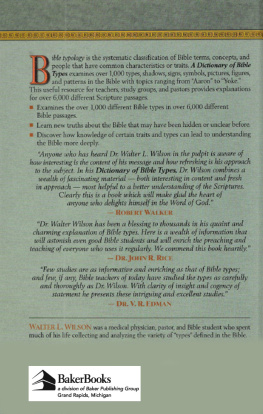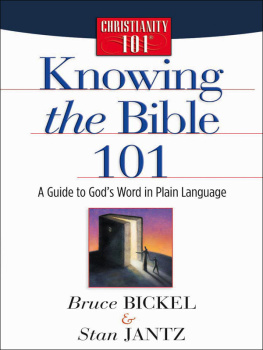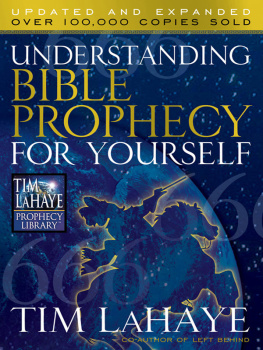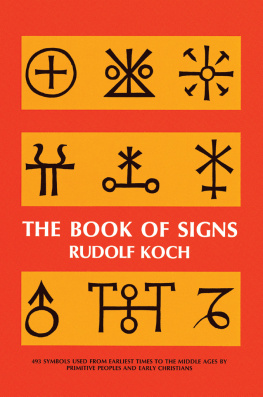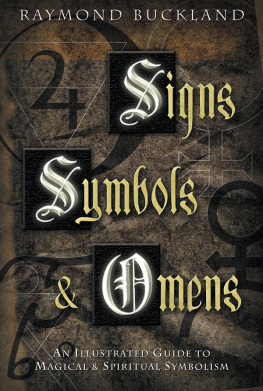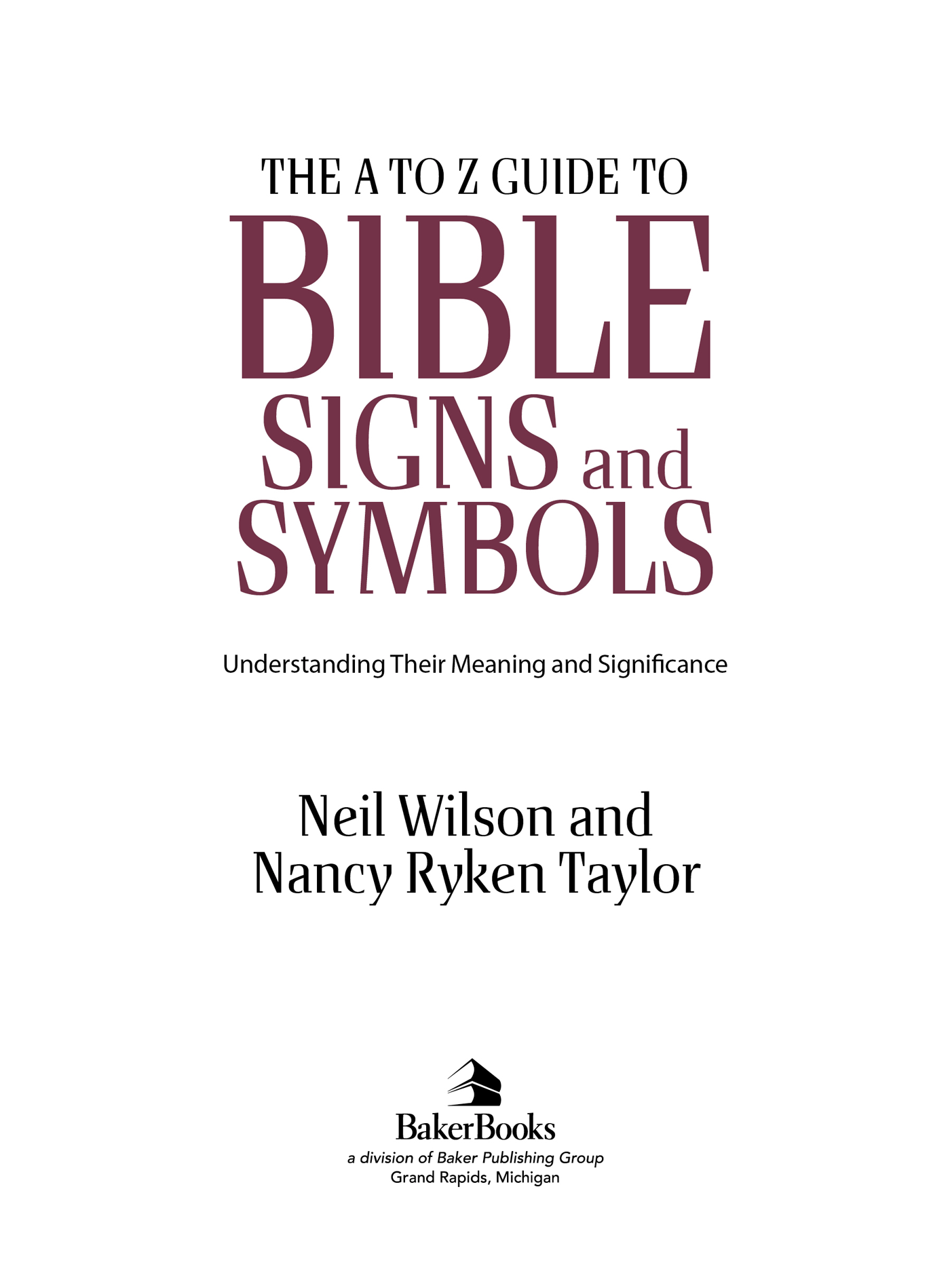
2015 by Barton-Veerman Company
Published by Baker Books
a division of Baker Publishing Group
P.O. Box 6287, Grand Rapids, MI 49516-6287
www.bakerbooks.com
Ebook edition created 2015
All rights reserved. No part of this publication may be reproduced, stored in a retrieval system, or transmitted in any form or by any meansfor example, electronic, photocopy, recordingwithout the prior written permission of the publisher. The only exception is brief quotations in printed reviews.
Library of Congress Cataloging-in-Publication Data is on file at the Library of Congress, Washington, DC.
ISBN 978-1-4412-2188-9
Unless otherwise indicated, Scripture quotations are from G OD S W ORD . 1995 Gods Word to the Nations. Used by permission of Baker Publishing Group.
Scripture quotations labeled ESV are from The Holy Bible, English Standard Version (ESV), copyright 2001 by Crossway, a publishing ministry of Good News Publishers. Used by permission. All rights reserved. ESV Text Edition: 2007.
Scripture quotations labeled KJV are from the King James Version of the Bible.
Scripture quotations labeled NASB are from the New American Standard Bible, copyright 1960, 1962, 1963, 1968, 1971, 1972, 1973, 1975, 1977, 1995 by The Lockman Foundation. Used by permission.
Scripture quotations labeled NIV are from the Holy Bible, New International Version. NIV. Copyright 1973, 1978, 1984, 2011 by Biblica, Inc. Used by permission of Zondervan. All rights reserved worldwide. www.zondervan.com
Scripture quotations labeled NKJV are from the New King James Version. Copyright 1982 by Thomas Nelson, Inc. Used by permission. All rights reserved.
Scripture quotations labeled NLT are from the Holy Bible , New Living Translation, copyright 1996, 2004, 2007 by Tyndale House Foundation. Used by permission of Tyndale House Publishers, Inc., Carol Stream, Illinois 60188. All rights reserved.
Developed by Livingstone, the publishing services division of Barton-Veerman Company. Contributing staff included: Rick Ezell, Nancy Ryken Taylor, Katherine Wilson, Neil Wilson, Larry Taylor, Tom Shumaker, and Dave Veerman.
The A to Z Guide to Bible Signs and Symbols is dedicated to all those who eagerly read the figurative language of Gods Word, appreciate the literary scope of Gods amazing written revelation, apply the truth presented in creative ways, and will immediately note with delight the many signs and symbols we didnt have room to include. Biblical signs and symbols can be described the same way the apostle John summarized the signs of Christ he chose for his Gospel:
Jesus performed many other miracles that his disciples saw. Those miracles are not written in this book. But these miracles have been written so that you will believe that Jesus is the Messiah, the Son of God, and so that you will have life by believing in him.
(John 20:3031)
Contents
Cover
Title Page
Copyright Page
Dedication
Introduction
A
Altar
Ark
Arm
B
Babylon
Baptism
Beast
Bethlehem
Birth
Black
Blood
Body
Book/Scroll
Branch
Bread
Bride
Bridegroom
Brimstone
Building
Bull/Calf
C
Camel
Canaan
Candlestick/Lamp Stand
Circumcision
Clear/Crystal/Transparent
Clothing
Cornerstone
Cross/Crucifixion
Crown
D
Darkness
Day
Deer
Donkey
Door/Doorpost
Dove/Wild Pigeon
E
Eagle/Vulture
Eden
Eye
F
Father
Feast/Banquet
Feet
Fire
Fish
Five
Flowers
Forty
Four
G
Gate
Goat
Gold
Graft
Grapes
H
Hand
Head
Heaven
Honey
Horn
Horse
I
Incense
J
Jar/Pottery/Vessel
Jonah in the Great Fish
Jordan River
K
Key
Kingdom
L
Lamb/Sheep
Lamp
Leprosy
Light
Lion
Locust
Lords Supper/Last Supper/Lords Table
M
Mark/Seal
Marriage
Meal
Mirror
Mountain/Hill
Mount Moriah
Mount Sinai
N
Nineveh
O
Oil
One
One Hundred Forty-Four Thousand
P
Passover
Pigs
Precious Stones
Purim
Purple
Q
Quail
R
Rainbow
Raven/Crow
Red/Scarlet
Ring
Rome
Root
S
Sabbath
Sacrifice/Offering
Salt
Sea of Galilee
Seed
Serpent on a Pole
Serpent/Dragon
Seven
Ship/Boat
Silver
Six Hundred Sixty-Six
Sodom
Son
Stone/Rock
Sword
T
Tabernacle
Temple
Thousand
Three
Threshing Floor
Throne
Tree
Trumpet/Shofar
Twelve
Two
U
Unleavened Bread/Yeast
V
Veil/Curtain
Vine
W
Water
White
Wilderness
Wind
Wine
X
Xerxes the Great (and Other Significant Rulers)
Y
Yoke
Z
Zion/Jerusalem
Image Credits
Back Ads
Back Cover
Introduction
W e want a sign! The demand was issued in a threatening tone that left unspoken the or else! that was part of the tense moment. Jesus had just cleared the temple court in Jerusalem that had been turned into a kind of farmers market / money exchange under the permission of the religious people in charge. They were not happy with Jesus, and decided the best way to get rid of him and bring back the merchants was to challenge his right to intervene. They demanded his credentials. Show us you have the right to order us around! Do a miracle! You claim to speak for God? Prove it! John 2:1322 gives us a glimpse of the significance of signs and symbols in the Bible. When his opponents demanded proof, Jesus said, Tear down this temple, and Ill rebuild it in three days (John 2:19). His hearers thought he was referring to the impressive buildings surrounding them, but John explains Jesus was using the temple as a symbol: But the temple Jesus spoke about was his own body. After he came back to life, his disciples remembered that he had said this. So they believed the Scripture and this statement that Jesus had made (John 2:2122).
Before Jesus is actually recorded as having performed any miracles, he faced a similar challenge: If you are the Son of God, tell these stones to become loaves of bread! (Matt. 4:3). Satan taunted him, Prove youre the Son of God. Show me a sign; whip up a miracle. The exchange that follows between Satan and Jesus during the wilderness temptation (Matt. 4:111) is one of the places in the Bible that emphasizes the significance of signs and symbols in understanding what God tells us in his Word.
Bible Signs and Symbols
Maybe your first question in opening this book is, what are signs and symbols and what is the difference between them? Good question. Signs point or draw attention; symbols represent. Signs are clues; symbols are pictures that denote an object, purpose, or concept. Public bathrooms around the world display recognizable symbols (usually on the door) that indicate male and female facilities. In some cases, signs and symbols work together. Walk through an airport in a foreign place and you will see signs displaying a plate and utensils, indicating a place to eat in the direction of the arrow. Signs are like calling cards, passports, and deedsnot necessarily related directly to an object, they confirm or prove a claim. The signs that you own a car or home are the keys in your hand and the title in your possession with your signature (itself a sign) on the correct line. Signs dont have to be documents; they can be unconnected events or circumstances whose occurrence indicates the truth of a different claim.








